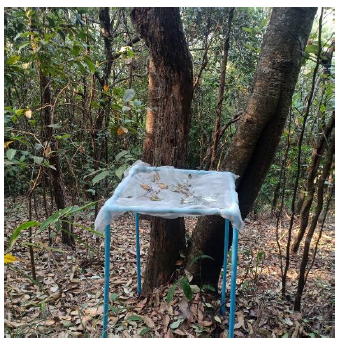Comparative Study on Seed Dispersal and Tree Seedling Diversity Between a Natural Forest and a Restored Forest Area in Mae Rim District,Chiang Mai
Keywords:
Forest restoration, Seed dispersal, Seedling, Seed trap, Similarity index, Circular plotAbstract
Accelerating forest regeneration in degraded areas is one of the essential tasks to mitigating global climate change. Natural regeneration can occur if seeds from the neighboring forest disperse to degraded areas, germinate, and thrive. The study compared seed rain and tree seedling diversity in natural and adjacent5-year-old restored forests in Mae Rim District, Chiang Mai. From January to September 2021, to ensure that data collection covers both wet and dry seasons, ten hanging-mesh seed traps were installed in each site, and seeds deposited in the traps were collected and identified once a month. Tree seedling diversity was carried out by establishing three 10-m-diameter circular plots in each site. Natural seedlings ranging in height from 10 to 100 cm were recorded and identified. The seed trap experiment shows seeds of eight tree species in the natural forest and two species in the restored forest. Similarity seeds found in both sites show that 20% of the seed species can disperse from natural forests to neighboring areas. The study of seedlings in both sites revealed 23 species in the natural forest and 11 species in the restored forest. When the species found in seed traps and seedling surveys were compared, six species were the same in the natural forest and one in the restoration plot, resulting in a 30% and 15% similarity index, respectively. These findings imply that natural regeneration in restoration forests is slower and less diverse than natural forests. As a result, additional intervention such as planting native tree seedlings and regular weeding may be required to speed up the regeneration process.

